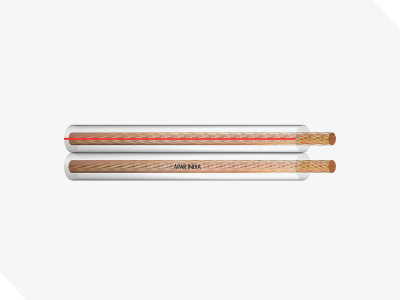![]()
SPEAKER CABLE
APAR speaker cables are designed and manufactured to achieve optimal performance from connected instruments by utilizing the best parameters.
APAR speaker cables are made using a multi-wire, bright annealed flexible bare electrolytic grade Cu. conductor. Each core of the cable is designed for easy identification and is insulated with a specially formulated, in-house FR transparent insulation that has a high value of oxygen and temperature index. This construction ensures distortion or attenuation-free voice transmission with very low “dB” loss.
Application
Suitable in dry locations for connections of portable power consumers submitted to weak mechanical strength like light electrical hand-held equipment and in and on lighting units.
Also referred to as speaker wire.
Characteristic
- Voltage Rating Uo/U – 300/300V
- Test Voltage – 2000V
- Temperature Rating – Flexing: -5°C to +70°C
- Minimum Bending Radius – 6x Overall Diameter
Features & Advantages


Transparent FR PVC insulated, twin core copper conductor (Flexible)

2C x 0.5 Sq.mm to 2C X 2.5 sq. mm
Technical Characteristics & Standards
 Get the product catalogue and specs
Download PDF
Get the product catalogue and specs
Download PDF 













